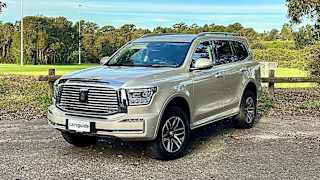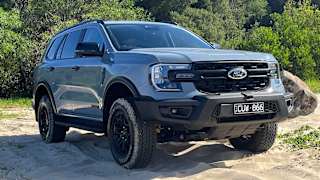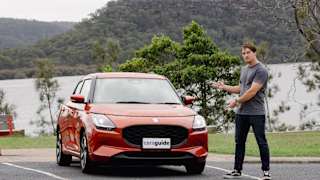Of course it was going to happen and now here it is: the first electrified Chevrolet Corvette - the E-Ray - has officially been revealed overnight in New York and CarsGuide can confirm it’s coming to Australia.
“It is with great excitement that we can confirm that the next-gen Corvette, the E-Ray, will make its way Down Under. Stay tuned for more details,” a General Motors Specialty Vehicles spokesperson told CarsGuide.
The E-Ray has been revealed to the world exactly 70 years after the original Corvette made its debut in 1953.
While not fully electric, the 2024 E-Ray uses a petrol-electric hybrid powertrain by combining the 369kW and 637Nm 6.2-litre LT2 V8 from the current petrol Corvette Stingray, with an electric motor that has an output of 118kW and 169Nm.
The mid-engine petrol V8 powers the rear wheels, while the motor which is housed over the front axle drives the front wheels, giving the E-Ray all-wheel drive.
Combined the engine and motor produce 488kW or 655 horsepower. That’s enough to throw the E-Ray from 0-100km/h in just over 2.5 seconds. The E-Ray’s petrol-only powered Corvette Stingray 2LT has an official 0-100km/h sprint time of 2.9 seconds.
Chevrolet calls it the quickest production version of the Corvette ever and comes out of the box with a standing 400m (quarter mile) time of 10.5 seconds.
.jpg)
For those concerned that a hybrid Corvette might not have the same muscle car appeal as a petrol-only Corvette, Chevrolet’s executive chief engineer Tadge Juechter has some reassurance.
“Corvettes must provide an exhilarating driving experience on backroads and tracks, and E-Ray nails it,” Mr Juechter says. “The electrification technology enhances the feeling of control in all conditions, adding an unexpected degree of composure.”
The E-Ray does not require plugging into an external power source to charge the 1.9kWh battery pack which is situated between the seats. Instead, charging is performed through regenerative braking.
Earlier this week Corvette released a teaser video of the E-Ray. During the clip the driver selects ‘Stealth Mode’ and we can now confirm that this allows the E-Ray to drive under electric power only up to 72km/h.
.jpg)
The E-Ray also comes with a Brembo Carbon ceramic braking system, Magnetic Ride Control adaptive suspension and staggered 20- and 21-inch wheels wearing Michelin Pilot Sport tyres.
From a styling perspective the E-Ray is immediately recognisable as part of the current generation Stingray family, although it is 91.5mm wider.
Pricing and full specifications are yet to be announced but the list price for the Stingray 2LT starts at $144,990 in Australia.
Australian pricing and specs for the 2024 E-Ray will be announced closer to its local launch.







.jpg)





.jpg)


.jpg)

.jpg)


.jpg)

.jpg)


.jpg)
.jpg)


.jpg)